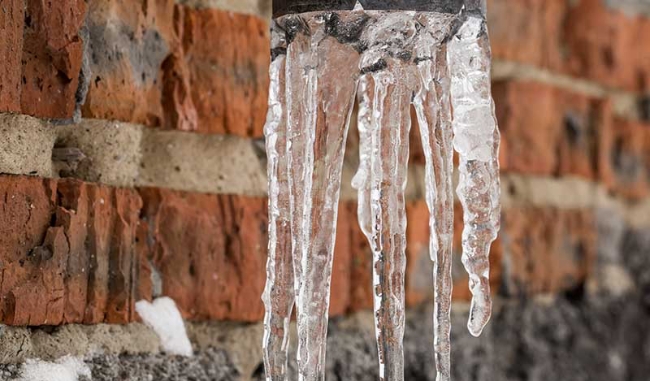Ways to Safeguard Plumbing System from Cold Weather: Essential Strategies
Ways to Safeguard Plumbing System from Cold Weather: Essential Strategies
Blog Article
We have stumbled upon the article about Helpful Tips to Prevent Frozen Pipes this Winter below on the internet and believe it made good sense to write about it with you on my blog.

Winter can damage your plumbing, particularly by freezing pipelines. Right here's how to stop it from occurring and what to do if it does.
Intro
As temperatures decline, the danger of frozen pipelines increases, possibly leading to pricey fixings and water damages. Recognizing how to avoid icy pipes is critical for property owners in cool climates.
Comprehending Icy Pipelines
What creates pipelines to freeze?
Pipes ice up when revealed to temperature levels below 32 ° F (0 ° C) for extended periods. As water inside the pipes freezes, it expands, putting pressure on the pipe walls and potentially causing them to rupture.
Dangers and damages
Frozen pipes can result in water disturbances, residential or commercial property damages, and expensive repairs. Ruptured pipelines can flooding homes and cause substantial architectural damage.
Indications of Frozen Pipeline
Identifying frozen pipelines early can stop them from rupturing.
How to recognize icy pipes
Seek reduced water circulation from faucets, uncommon odors or sounds from pipes, and noticeable frost on exposed pipelines.
Avoidance Tips
Protecting at risk pipes
Cover pipes in insulation sleeves or make use of warm tape to shield them from freezing temperatures. Focus on pipelines in unheated or exterior areas of the home.
Home heating strategies
Keep interior areas effectively heated, especially areas with plumbing. Open up cupboard doors to permit cozy air to flow around pipelines under sinks.
Protecting Outdoor Plumbing
Garden hose pipes and outdoor faucets
Disconnect and drain garden hoses before winter. Install frost-proof faucets or cover outdoor taps with protected caps.
What to Do If Your Pipes Freeze
Immediate actions to take
If you suspect icy pipelines, keep faucets open to ease stress as the ice melts. Make use of a hairdryer or towels taken in warm water to thaw pipes slowly.
Long-Term Solutions
Architectural changes
Think about rerouting pipes far from exterior wall surfaces or unheated areas. Include extra insulation to attic rooms, basements, and crawl spaces.
Updating insulation
Invest in top quality insulation for pipelines, attic rooms, and walls. Correct insulation assists maintain constant temperature levels and decreases the danger of icy pipes.
Final thought
Protecting against frozen pipes requires positive procedures and fast responses. By understanding the causes, indications, and safety nets, home owners can shield their plumbing during cold weather.
5 Ways to Prevent Frozen Pipes
Drain Outdoor Faucets and Disconnect Hoses
First, close the shut-off valve that controls the flow of water in the pipe to your outdoor faucet. Then, head outside to disconnect and drain your hose and open the outdoor faucet to allow the water to completely drain out of the line. Turn off the faucet when done. Finally, head back to the shut-off valve and drain the remaining water inside the pipe into a bucket or container. Additionally, if you have a home irrigation system, you should consider hiring an expert to clear the system of water each year.
Insulate Pipes
One of the best and most cost-effective methods for preventing frozen water pipes is to wrap your pipes with insulation. This is especially important for areas in your home that aren’t exposed to heat, such as an attic. We suggest using foam sleeves, which can typically be found at your local hardware store.
Keep Heat Running at 65
Your pipes are located inside your walls, and the temperature there is much colder than the rest of the house. To prevent your pipes from freezing, The Insurance Information Institute suggests that you keep your home heated to at least 65 degrees, even when traveling. You may want to invest in smart devices that can keep an eye on the temperature in your home while you’re away.
Leave Water Dripping
Moving water — even a small trickle — can prevent ice from forming inside your pipes. When freezing temps are imminent, start a drip of water from all faucets that serve exposed pipes. Leaving a few faucets running will also help relieve pressure inside the pipes and help prevent a rupture if the water inside freezes.
Open Cupboard Doors
Warm your kitchen and bathroom pipes by opening cupboards and vanities. You should also leave your interior doors ajar to help warm air circulate evenly throughout your home.

Do you enjoy reading up on How To Avoid Freezing Pipes? Post a remark below. We will be happy to see your ideas about this content. We are looking forward to see you back again soon. Sharing is good. You won't know, you may be helping someone out. Thanks a lot for going through it.
Schedule A Service Report this page